Disclosure: This article contains affiliate links. We may earn a commission from purchases at no extra cost to you, which helps our travel content.
While most of my travel chronicles typically feature me chasing weather patterns across frigid landscapes, sometimes even a meteorology enthusiast needs a change of climate. That's how I found myself swapping my thermal layers for lightweight cotton as I landed in Bahrain this past October. The small Gulf nation wasn't initially on my radar until a fellow traveler at a hostel in Reykjavík showed me photos of Muharraq's labyrinthine alleyways and wind towers. What struck me wasn't just the architectural contrast to my usual tundra expeditions, but how the island's weather patterns—particularly the shifting winds that once guided pearl divers—shaped its cultural identity. With a weekend to spare and curiosity as my compass, I embarked on what would become one of my most unexpectedly rewarding urban explorations, navigating Muharraq's historic districts with the same methodical approach I typically reserve for tracking Arctic pressure systems.
Navigating Muharraq: The Taxi Advantage
If there's one travel hack I've perfected over years of budget expeditions to remote weather stations, it's mastering local transportation systems. In Muharraq, this means embracing the taxi network—not just as transportation but as a gateway to authentic experiences.
Unlike many Gulf cities where ride-sharing apps dominate, Muharraq retains a robust network of local drivers who know every narrow alley and hidden courtyard. While Bahrain does have Uber and Careem, I found traditional taxis significantly cheaper for exploring the compact historic district. Most drivers speak enough English to communicate, but I loaded a few Arabic phrases on my offline translator app which proved invaluable when describing specific destinations off the tourist path.
My driver Mahmood, who initially picked me up from the airport, became my impromptu guide after I expressed interest in how the seasonal winds influenced the city's architecture. He offered to show me the traditional wind towers (badgirs) that once served as natural air conditioning systems—an ingenious adaptation to the Gulf's climate long before electricity. For just 15 Bahraini Dinar (about $40), he provided a three-hour personalized tour that no commercial operation could match.
The beauty of taxi exploration in Muharraq is the flexibility—you can hop between sites at your own pace, ask drivers to wait while you explore (usually for a small additional fee), or have them recommend local eateries where tourists rarely venture. Just remember to negotiate fares upfront, as meters are rarely used for these informal tours.

💡 Pro Tips
- Ask taxi drivers to recommend local restaurants—they often know hidden gems with authentic Bahraini cuisine
- Save your hotel's business card with the address in Arabic to show drivers when returning
- Negotiate fares before starting your journey, especially for longer waiting periods
The Pearling Path: A UNESCO Treasure Hidden in Plain Sight
The heart of Muharraq's appeal lies along its UNESCO-listed Pearling Path, a 3.5 km trail that chronicles Bahrain's pearl diving heritage. Unlike many heritage sites that feel sanitized for tourism, this cultural corridor remains refreshingly authentic—I frequently found myself the only visitor in many of the meticulously restored merchant houses.
The path begins at Bab Al Bahrain in neighboring Manama and crosses to Muharraq, though I recommend starting directly in Muharraq at the Pearling Path Visitor Center. This striking contemporary structure designed by Valerio Olgiati provides crucial context through interactive exhibits explaining how pearl diving shaped Bahrain's economy and culture before the discovery of oil.
What fascinated me most was learning how pearl divers relied on intricate knowledge of seasonal wind patterns and tidal movements—the same meteorological phenomena that captivate me in polar regions, but applied to a completely different environment and purpose. The traditional pearl diving boats (dhows) were designed specifically to harness the prevailing winds of the Gulf.
As you follow the path, you'll encounter 17 restored buildings, including the magnificent Siyadi complex with its stunning wind tower and the meticulously restored Bin Matar House. I spent hours photographing these architectural treasures with my compact camera, which proved perfect for capturing both architectural details and the changing quality of light in narrow alleyways.
What makes this experience budget-friendly is that many buildings along the path are free to enter, while others charge nominal fees (1-2 BHD, or $2.65-$5.30). The entire path can be explored leisurely in one full day, though I spread it across two to allow time for conversations with local craftspeople still practicing traditional trades in workshops along the route.
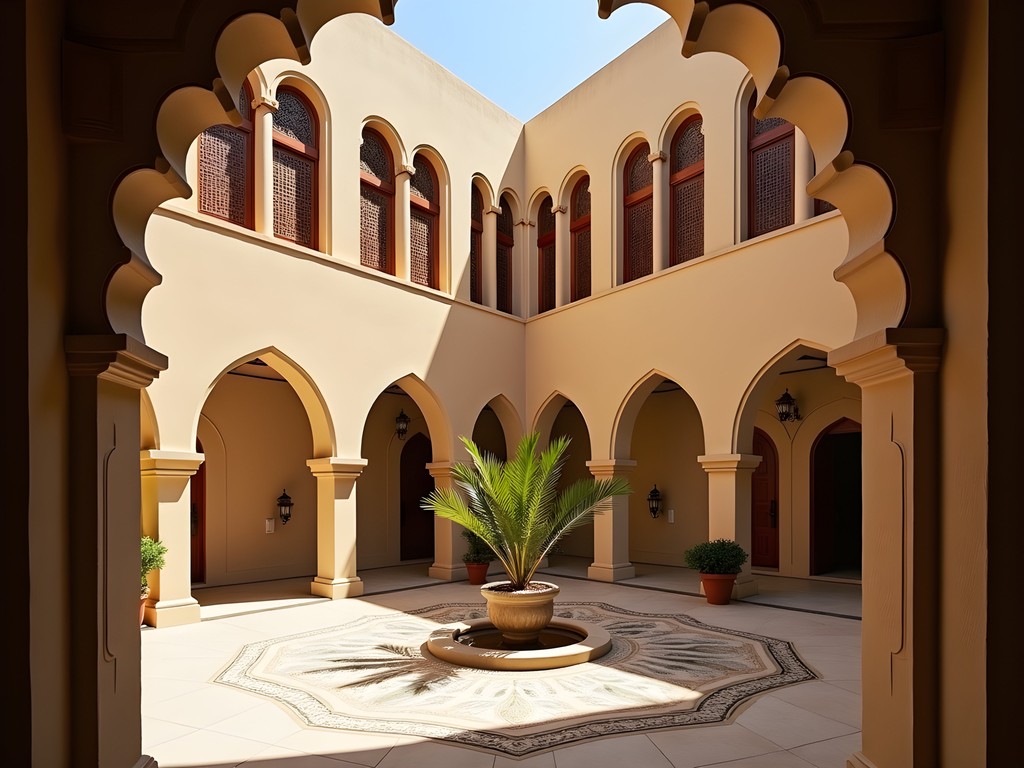
💡 Pro Tips
- Visit early morning (8-10am) to avoid both heat and crowds
- Pick up the free detailed map at the Visitor Center—Google Maps doesn't show many of the smaller historical sites
- Look for the small blue signs marking official path sites, as some are tucked away in unexpected corners
Souq Al Qaisariya: Budget Foodie Paradise
One of the unexpected highlights of my Muharraq exploration was Souq Al Qaisariya, a recently restored market that offers a perfect blend of history and culinary adventure without the inflated tourist prices found in more commercial areas of Bahrain.
The souq dates back to the early 1800s and was once the commercial hub for pearl merchants. After extensive restoration, it reopened in 2019, maintaining its historical character while accommodating modern businesses. Unlike the glitzy malls of Manama, prices here remain reasonable, making it an ideal spot for budget travelers seeking authentic experiences.
I arrived at the souq around sunset, when the temperature had dropped to a pleasant 75°F (24°C)—a welcome relief after the midday heat. The narrow alleyways were coming alive with locals finishing their workday shopping, and the golden hour light filtering through the wooden lattice coverings created an almost magical atmosphere.
My first discovery was a small shop selling traditional Bahraini sweets. For less than 2 BHD ($5.30), I sampled halwa (a gelatinous dessert flavored with saffron and nuts) and muhallabiya (a milk pudding scented with rose water). The shopkeeper, noticing my interest in local culinary traditions, explained how these recipes have remained unchanged for generations despite the rapid modernization around them.
The real treasure, however, was finding Café Naseef—an institution dating back to 1920 that serves what locals consider the best ice cream in Bahrain. Their specialty is booza (Arabic ice cream) made with mastic gum and sahlab, giving it a uniquely elastic texture. At just 1 BHD ($2.65) for a generous serving, it was both a cultural experience and a delicious way to cool down.
For dinner, I followed the crowds to a small, unmarked restaurant where I ordered the daily fish special. The waiter brought out a whole hammour (local grouper) grilled with Bahraini spices, served with rice and bread for just 4 BHD ($10.60). I recorded the meal in my travel journal, where I keep detailed notes on regional foods and their connection to local environments—a habit from my environmental science days that enriches my travel experiences.

💡 Pro Tips
- Visit the souq between 4-7pm when it's most lively but not overcrowded
- Bring cash—many smaller vendors don't accept cards
- Look for shops with locals queuing—these typically offer the best quality at fair prices
Architectural Weather Stations: Muharraq's Wind Towers
As someone who has spent countless hours in modern weather monitoring stations across Alaska and northern Canada, I found myself unexpectedly fascinated by Muharraq's traditional wind towers (badgirs). These ingenious structures represent perhaps the world's oldest sustainable climate control systems—architectural weather stations that harness natural air currents to cool buildings without electricity.
The best-preserved examples can be found in the Shaikh Isa bin Ali House, which served as the ruler's residence until 1932 and now functions as a museum. For just 2 BHD ($5.30), you can explore this sprawling complex with multiple courtyards and rooms arranged around a central wind tower. Unlike many heritage sites that rope off areas, here you're free to wander through most spaces, examining the clever architectural details up close.
What makes these wind towers particularly remarkable is their scientific precision. They're designed to catch passing breezes from any direction and funnel them downward into the living spaces below. As air passes through the tower's internal channels, it creates a natural cooling effect through convection—essentially the same principles modern meteorologists study, but applied centuries ago as architectural solutions.
I spent an enlightening hour sitting in one courtyard, using my pocket weather meter to measure the temperature difference between areas directly under the wind tower's influence and those just a few meters away. The results were impressive: a consistent 8-10°F (4-5°C) reduction in areas ventilated by the tower, achieved through nothing more than thoughtful design working with natural air currents.
For the weather-pattern enthusiast in me, it was a profound reminder that before our sophisticated monitoring equipment and computer models, people developed intimate, practical knowledge of local climate conditions out of necessity. These towers weren't just architectural flourishes—they were survival mechanisms in one of the world's hottest regions, developed through generations of careful observation of wind patterns and thermal dynamics.
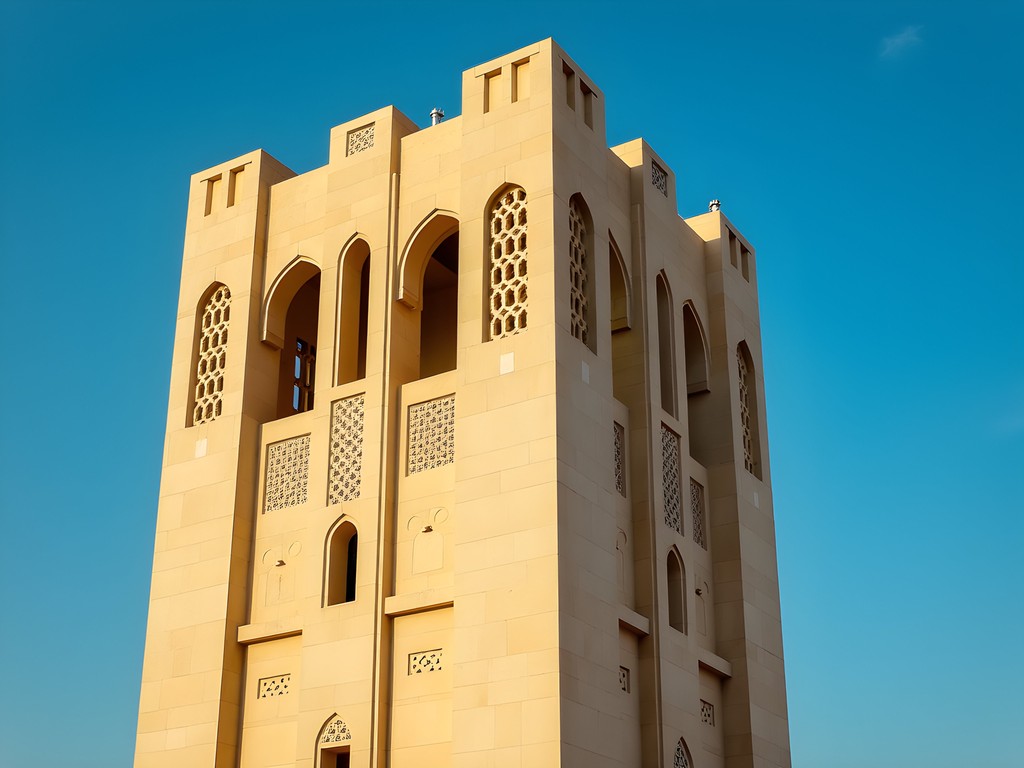
💡 Pro Tips
- Visit mid-morning when the temperature difference created by the wind towers is most noticeable
- Look for the small openings at the base of wind towers where the cooled air exits into living spaces
- Ask museum staff about seasonal adjustments traditionally made to optimize tower performance in different weather conditions
Beyond the Guidebooks: Local Connections
What transformed my weekend in Muharraq from a simple sightseeing trip into a meaningful cultural exchange were the unexpected conversations with locals—encounters that no guidebook could arrange but that budget travelers are often uniquely positioned to experience.
One such moment came when I ducked into a small café to escape a brief afternoon rain shower (yes, it does occasionally rain in Bahrain, particularly in October when I visited). The owner, noticing my camera and weather meter, invited me to join him for tea. When I explained my background in environmental science and interest in traditional climate adaptations, he called his father—a former pearl diver—who arrived twenty minutes later to share stories about navigating by the stars and predicting weather changes based on subtle shifts in wind patterns.
The elderly gentleman described how pearl divers developed their own meteorological knowledge system, reading the color of the water, the behavior of certain fish, and the feel of the wind to anticipate conditions. His descriptions of cloud formations that signaled approaching storms were remarkably similar to modern meteorological indicators I've studied, though developed entirely through generational observation rather than scientific instruments.
Another memorable connection came through a young architectural student I met while photographing wind towers. Hamed was documenting traditional cooling methods for his thesis and offered to show me several hidden examples of climate-adaptive architecture not open to the public. We spent two hours walking through residential neighborhoods where he pointed out subtle features I would have missed—like the specific orientation of buildings to maximize cross-ventilation and the strategic placement of windows to create pressure differentials that promote air movement.
These encounters happened organically because I was walking rather than driving, staying in a small local guesthouse rather than an international hotel, and showing genuine interest in aspects of Bahraini culture beyond the standard tourist attractions. My compact binoculars also served as surprising conversation starters—locals were curious why I was using them in an urban setting, giving me the opportunity to explain my interest in observing architectural details and bird patterns around the coastal areas.
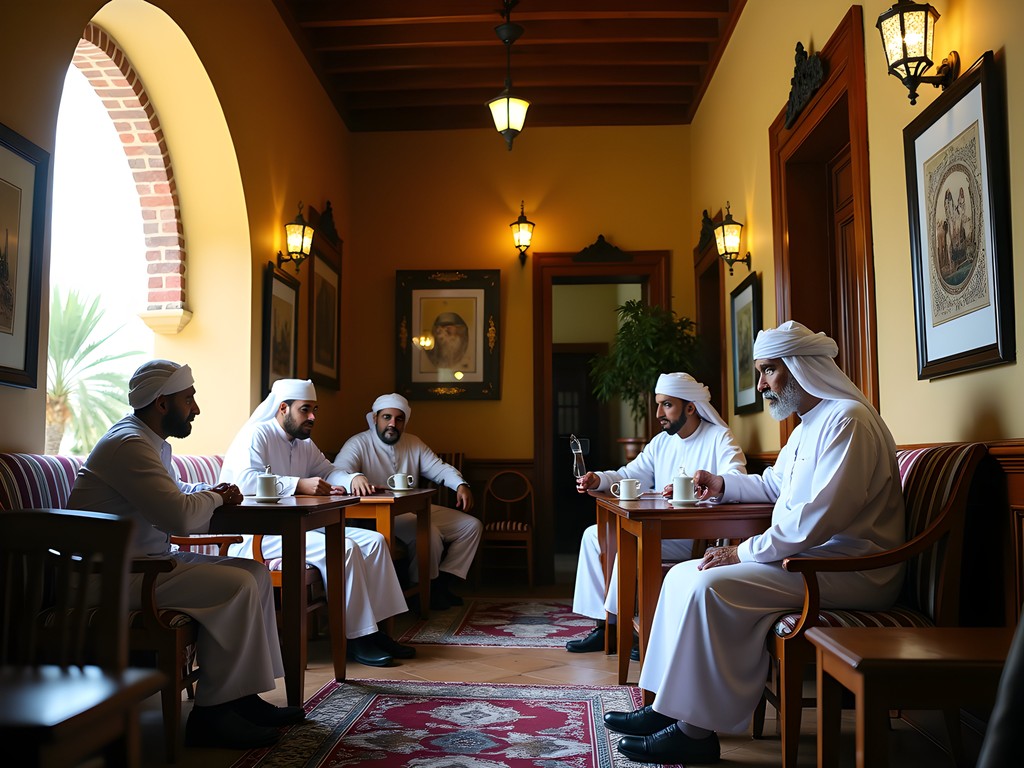
💡 Pro Tips
- Learn basic Arabic greetings—even simple phrases open doors to meaningful interactions
- Carry small gifts from your home country to offer when people share their time and knowledge
- Spend time in local cafés rather than international chains—these are social hubs where conversations naturally develop
Final Thoughts
As my weekend in Muharraq drew to a close, I found myself reflecting on how this detour from my usual tundra expeditions had unexpectedly aligned with my meteorological interests. The city's architecture, designed to harness natural air currents, represents one of humanity's most elegant responses to climate challenges—a theme that resonates deeply with my environmental background. What makes Muharraq special isn't just its UNESCO status or historical significance, but how accessible these experiences are to budget travelers willing to explore independently. While Bahrain often gets overshadowed by its flashier Gulf neighbors, Muharraq offers something increasingly rare: an authentic historical center where everyday life continues amidst architectural treasures. For solo travelers seeking cultural immersion without breaking the bank, this compact island city deserves a prominent place on your Middle Eastern itinerary. Just remember to look up occasionally—the most fascinating weather station might be the centuries-old wind tower above your head.
✨ Key Takeaways
- Muharraq's compact size makes it perfect for budget exploration without expensive transportation needs
- The UNESCO Pearling Path offers free or low-cost access to remarkable historical architecture
- Local taxis provide affordable, personalized tours that reveal hidden aspects of the city
- Fall visits (October-November) offer ideal weather conditions with fewer tourists
📋 Practical Information
Best Time to Visit
October to November (fall) or March to April (spring)
Budget Estimate
$60-100 per day including accommodation, food, and activities
Recommended Duration
2-3 days
Difficulty Level
Easy


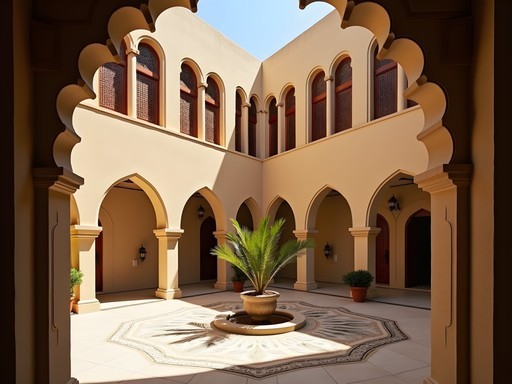
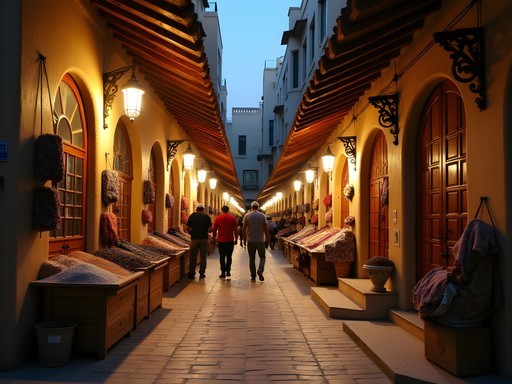
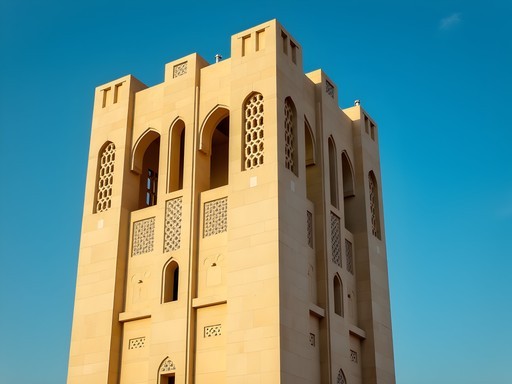



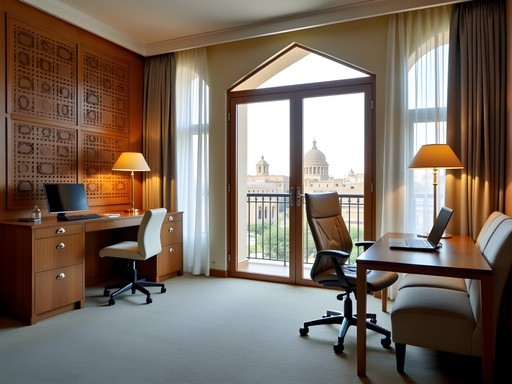






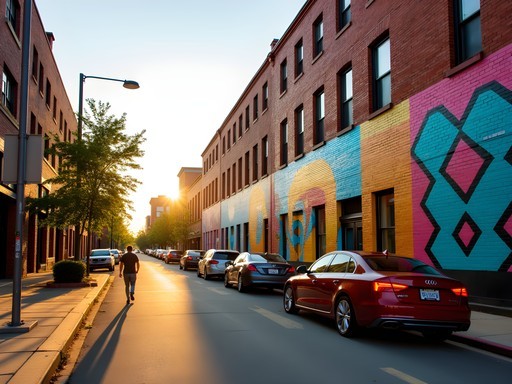
Comments
Gregory Boyd
Pierre, your meteorological perspective on Muharraq's architecture adds a fascinating dimension most travel writers miss. I've visited Bahrain three times now, and the wind towers (badgirs) are indeed an ingenious response to the Gulf climate. What's remarkable is how they create passive cooling through natural convection currents - essentially functioning as pre-industrial air conditioning. The Pearling Path is actually best experienced as a progressive narrative, starting from the coastline and moving inward to understand how pearl wealth transformed the urban landscape. For anyone visiting, I'd recommend downloading the official Pearling Path app which contains excellent audio guides and historical context for each building. And don't skip Bu Maher Fort at the beginning of the route - most tourists miss it, but the boat ride there offers spectacular views of the Bahrain skyline.
Pierre Clark
Thanks Gregory! Completely agree about the progressive narrative approach. The contrast between the humble fishing origins and the ornate merchant houses tells such a compelling story about the pearl trade's economic impact.
wavewanderer
Had no idea about the app or Bu Maher Fort! Definitely need to plan another trip now.
redpro
Just booked my flights to Bahrain! Can't wait to check out that Souq Al Qaisariya food scene you mentioned!
cooldiver
How was getting around Muharraq? Is it walkable or did you need taxis everywhere? Planning a trip in November and trying to figure out logistics.
Pierre Clark
The historic center is very walkable! I actually recommend exploring on foot to discover hidden corners. For longer distances or when it gets too hot, taxis are plentiful and affordable. I used my pocket guide which had a good walking map of the historic district.
Bryce Diaz
Pierre, you've captured the essence of Muharraq beautifully! I spent three days there last spring and was equally captivated by those wind towers. The ingenious natural cooling system reminds us that sustainable architecture isn't just a modern concept. My favorite memory was getting lost in those narrow alleyways and stumbling upon an elderly craftsman making traditional wooden doors. He invited me in for coffee and despite our language barrier, we had the most profound connection through gestures and smiles. If anyone's planning to visit, I'd suggest early mornings on the Pearling Path before the heat kicks in, and don't miss the roof access at Siyadi House for some incredible panoramic views!
redpro
Thanks for the Siyadi House tip! Adding it to my list for next month's trip.
wavewanderer
OMG I was just in Bahrain last month but totally missed Muharraq! Wish I'd seen this sooner! Those food pics from the souq are making me hungry all over again!
escapephotographer
Great photos of the Pearling Path! What camera setup did you use for those night shots of the illuminated buildings?
Pierre Clark
Thanks! Just used my trusty Sony A7III with the 24-70mm f/2.8. No special equipment needed - Muharraq's lighting at night is that photogenic!
escapephotographer
Thanks for the info! I'm adding Muharraq to my photo destination list for sure.
sunnymaster
Nice change from your usual cold weather posts! Those wind towers look incredible.
Claire Hawkins
Pierre, your post brought back so many memories! I took my family to Muharraq last year, and my kids were absolutely fascinated by the wind towers. We made a game of spotting them throughout the old city. The Pearling Path was a highlight for us too - my 10-year-old became obsessed with pearl diving history after our visit! One tip for families visiting: there's a small workshop near Sheikh Isa bin Ali House where they sometimes let children try pearl sorting (using imitation pearls). My daughter still talks about being a 'pearl merchant' for a day. Also, the halwa from the little shop at the corner of Souq Al Qaisariya - absolute must-try! We brought boxes home for everyone.
Pierre Clark
Claire, that pearl sorting workshop sounds fantastic! I didn't know about that. And yes, the halwa is incredible - I should have bought more to bring back. Your family travel perspective is always so valuable!
backpackclimber
How hot was it when you visited? Thinking about going in October but worried about the heat.
Pierre Clark
October should be perfect! I went in August (not the best idea for someone used to tundra climates 😅). October averages around 75-85°F (24-29°C) which is much more manageable. The wind towers work best in those conditions too!
smartseeker
Those wind towers look amazing! Added to my bucket list.
Venture X
Premium card with 2X miles, $300 travel credit, Priority Pass